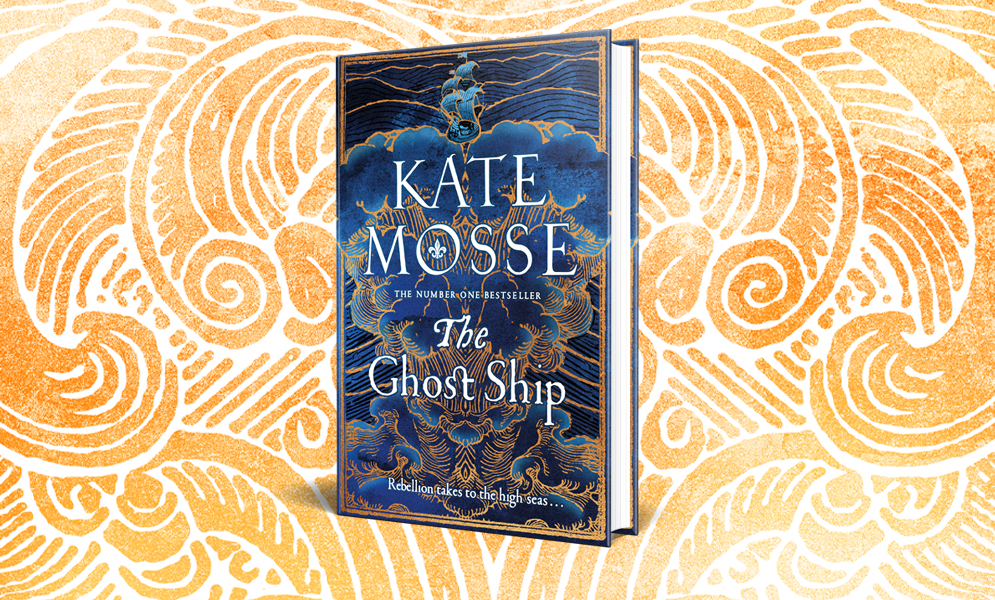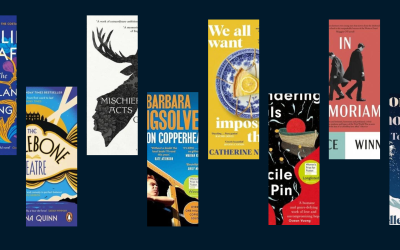
How to pitch your novel
Preparing to Pitch: The novelist salesperson “Can you summarise your novel in a sentence or two,” my marketer, Eloise asks,…


Doing interviews about my new pirate novel, The Ghost Ship, journalists sometimes ask why people like historical fiction so much. There are so many ways to answer that question, but I’d say when times are tough or complicated, readers often turn to historical fiction. It’s not just a matter of entertainment, though reading should always be entertaining whatever else it also is. It’s not simply escapism, although the colours of the past are seductive. It is more that fiction set in a period of time other than our own can help us to make sense of the present. Historical fiction is one way that we shine a spotlight on the past. It’s also about how the past and the present might speak to each other, about how we can interpret our own histories through the prism of art.
“The best historical fiction invites us to stand in other people’s shoes. ”
The best historical fiction invites us to stand in other people’s shoes. It connects us with those who’ve gone before us. It calls on us to consider other points of view and listen to other voices. It requires us to imagine who we might be if we found ourselves in, say, 16th century France or 19th century South Africa. Love, courage, hate, despair, jealousy, kindness, sacrifice, faith, fury, piety, cruelty, all and any of these emotions touched the lives of women and men’s then, as they do now. Research – into what people wore, what they read, what they ate, how they lived – can take us only so far, though it’s great fun scouring the archives, museums and libraries for that mind-blowing detail that will set things alight! But then comes the moment, when the historical record falls silent, and imagination takes over.
The Ghost Ship is a female pirate story set in the 17th century between Amsterdam, La Rochelle, Carcassonne and the Canary Islands. It’s about rebellious women in a man’s world, a story of revenge, murder and secrets, a queer love story set on the High Seas. I’ve always wanted to write a pirate novel – ever since being given the Ladybird Book of Pirates when I was six years old – and nineteenth-century literature was awash with pirate stories: R. M. Ballantyne’s The Coral Island came out in 1857; Walter Scott’s The Pirate was published in 1822; and Treasure Island by Robert Louis Stevenson published in book form in 1883. But, all of these pirate stories were firmly promoted as boys’ reading. Others, like Emilio Salgari’s The Black Corsair and Rafael Sabatini’s Captain Blood, claimed to have been inspired by real buccaneers and pirates. But where were the women? I knew from my Ladybird book that there had been at least two notorious female pirates.
I started to research and discovered that there were quite a few women who, out of necessity or a desire for adventure or revenge, also took to the seas and became “she-captains”. French noblewoman Jeanne de Clisson (1300–1359) was known as the ‘Lioness of Brittany’. Vowing to avenge her husband’s execution for treason in 1343, she acquired three warships with the assistance of the king of England, painted them black and fitted them out with red sails, then launched a campaign of terror against the French king and French ships in the English Channel. Her flagship was known as My Revenge and, for thirteen years, de Clisson ruled the Channel, running down ships and slaughtering their crew. All but one. She always left one man alive to carry her message of defiance.
A century later, Sayyida al Hurra (1485–1561), the queen of Tétoun in northern Morocco, was a pirate commander controlling the west side of the Mediterranean Sea in an alliance with the Turkish corsair Barbarossa of Algiers, who held the eastern waters. The title “al Hurra” means the “free one”, suggesting that she ruled as queen in her own right after the death of her first husband. She was a key protagonist in the sixteenth-century struggles between Ottoman and the Christian empires in Spain and Portugal.

There’s also Gráinne Ní Mháille – also known as Grace O’Malley (c. 1530–c. 1603). A towering figure in sixteenth-century Irish history, Gráinne was head of the O’Malley clan who, for more than three hundred years, ruled the southern shore of Clew Bay. One of her many legends has it that when she asked to accompany her father on a trading trip to Spain, and was refused on the grounds that her long hair would catch in the ship’s ropes, she chopped off her hair rather than accept her father’s decision. The act earned her the first of her nicknames, Gráinne “Mhaol”, maol meaning bald or cropped hair. At her father’s death, Gráinne took the helm as captain of the fleet. In 1593, after her sons and her half-brother were taken captive, O’Malley sailed to England to petition Elizabeth I for their release.
The largest pirate fleet commanded by a woman we know of was amassed by Zheng Yi Sao – known as Ching Shih (1775–1844), the pirate queen of the South China Seas, who inherited her dead husband’s informal command over the entire pirate federation and led a fleet of possibly as many as sixty thousand pirates. When she was forced to surrender in 1810, she was in personal command of twenty-four ships and more than 1,000 pirates.
But despite Zheng Yi Sao’s extraordinary achievements, eighteenth-century female pirate history really belongs to two women, Anne Bonny (1697–1721) and Mary Read (1685–1721), who I’d first met in my Ladybird book. Their lives read like a nautical sensation novel—embracing notoriety, courage, disguise, romance, impossible adventures, danger and glory – and it is Bonny and Read who were the inspirations for my protagonists in The Ghost Ship. Read, who was born in England, began dressing as a boy when she was a child, first as a way to secure an inheritance, then as a way to enlist in the Navy, fighting with British and Dutch forces against the French. Once peace was declared, and so now with no hope of advancement, Mary joined a ship bound for the West Indies. She was kidnapped by pirates, and aligned herself with their interests. Then, in 1720, she joined Anne Bonny and her partner, the notorious pirate “Calico Jack” Rackham. The Bonny and Read legend began.
Anne Bonny was born in Ireland, though she moved to Carolina in North America when she was ten. She may have “married” a female pirate, then did marry James Bonny, a sailor and pirate, but at some time after 1714, she and James moved to the Bahamas, which is where Calico Jack saw her and fell in love. When Bonny’s husband refused to divorce her, they fled the island, with Bonny disguised as a man, to crew Calico Jack’s ship. With both Anne Bonny and Mary Read now disguised, the trio spent years at sea in the Caribbean, with a price on their heads until finally, in October 1720, their ship was seized. Arrested and condemned, Calico Jack was executed, but the women were both granted a stay of execution by “pleading the belly”—that’s to say, claiming they were pregnant. And this is where the official record ends. Read died in prison in April 1720, probably from postpartum fever. But Bonny? There is no record either of her release, or of her execution. A ledger in a church in Jamaica lists an Anne Bonny dying in December 1733. Other stories have her escaping to America and settling there. Who’s to say… There’s a part of me that hopes she might still be out there, sailing the Caribbean in her own ghost ship…
The inspiration behind The Ghost Ship – all of my fiction, really – is telling the truth about women’s lives. Women were always there, standing beside men, building the world, but the writing of history often ignored women’s achievements, left them out or misattributed women’s contributions to the men who they lived alongside, and loved, or fought. So, discovering that there were many women who went to sea, who passed as men, to live a freer and more fulfilled life was an eye-opener. My imagined characters – Louise Joubert and Gilles Barrenton – are inspired by some of these fearless, glorious, swashbuckling women of the past. The Ghost Ship is a love story and a story of rebellion, yes, but it’s also a story about women surviving in a man’s world, about different kinds of love, about how we can all change our own stories.
The Ghost Ship by Kate Mosse is available to order now.

Preparing to Pitch: The novelist salesperson “Can you summarise your novel in a sentence or two,” my marketer, Eloise asks,…

Thrilled to annouce today the winning artist nominated to create ‘The Charlotte’, the figurine to be cast in bronze which…

The best recommendations come from readers, so we asked YOU to tell us the stand-out books by women you read…

There is nothing better than settling down with a good book and escaping the mundane, everyday life. Books are where…
Tune into host Vick Hope and a line-up of incredible guests on our weekly podcast full of unmissable book recommendations.
